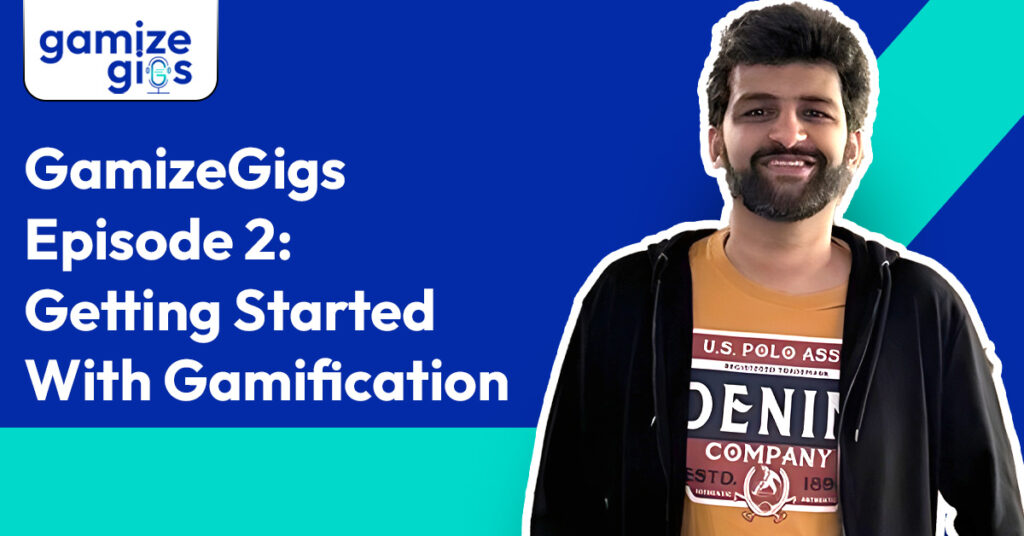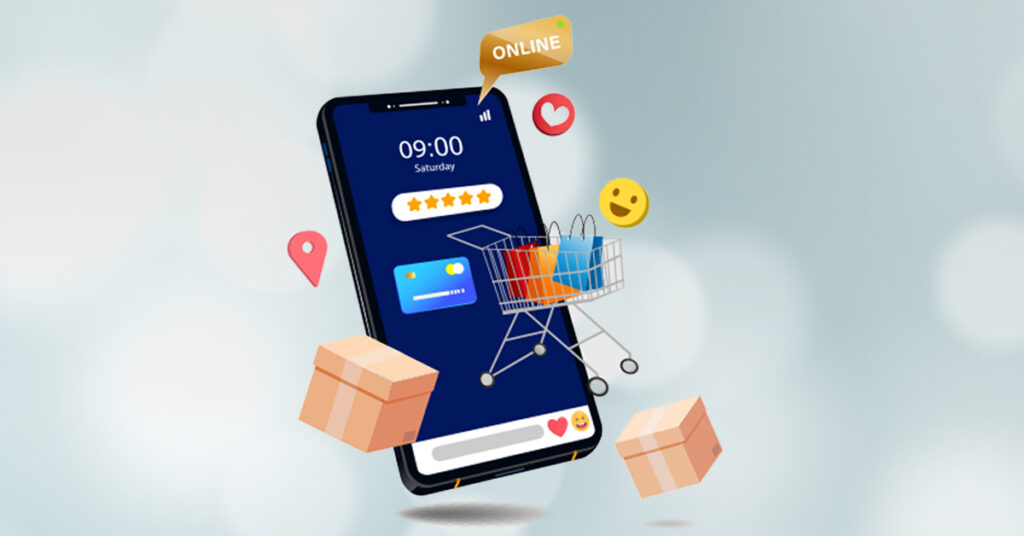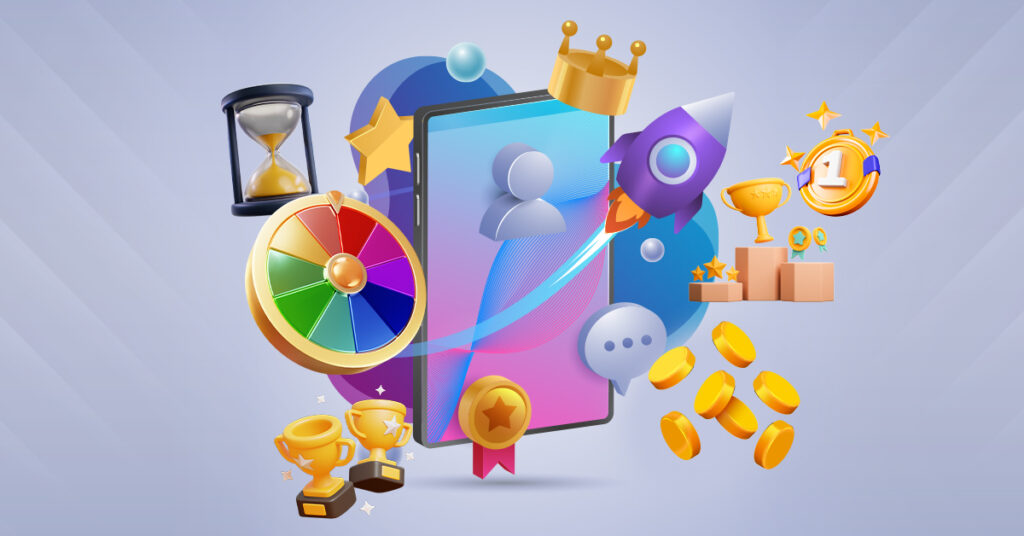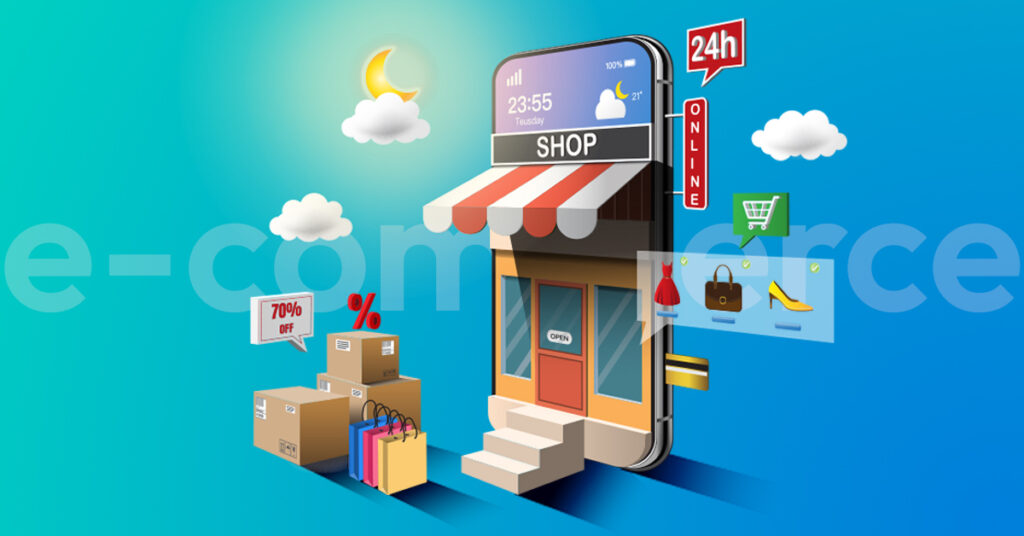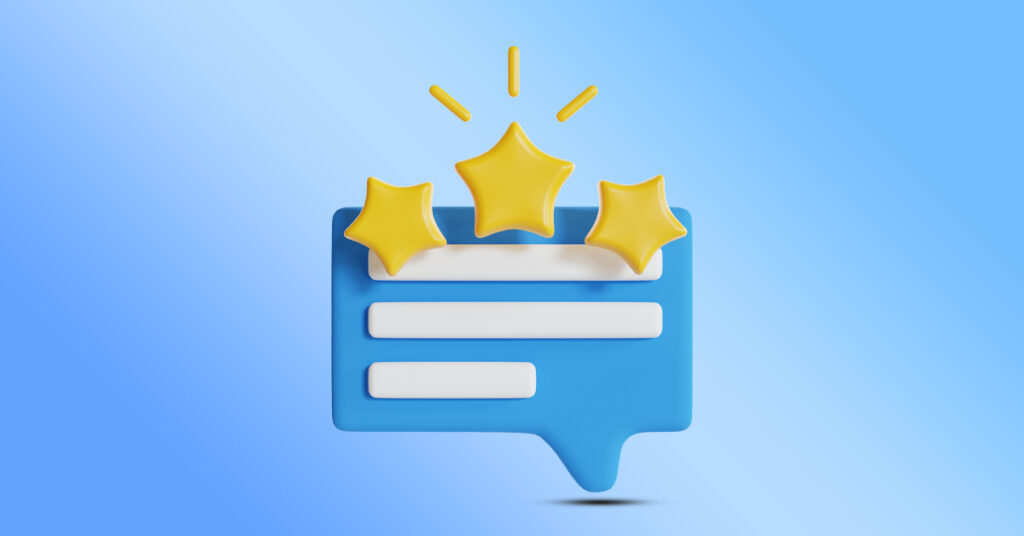Good things take time — last year, we kickstarted GamizeGigs, a podcast series to crack the acquire, engage and retain mantra with industry leaders.
We released our first episode, Gamification 101 where we discussed the basics of gamification with Abdullah Hill Nahian, Digital Gamification and Engagement Manager from Banglalink.
But, as we continued to talk to businesses trying to launch gamification, we noticed that while everyone finds it exciting, there are a lot of questions about how to approach gamification.
“Should we build gamification in-house or should we buy gamification software?”, “Is there a way to motivate users without spending a lot of money?”, “What type of rewards work?” — we came across such questions and realised one thing:
There could be no better topic of discussion for GamizeGig’s second episode than addressing such questions with an industry expert. So drumroll, please!
We give you the second episode of our podcast series:
‘Getting Started with Gamification’ where we invited Harshit Jhawar, a Lead Product Manager with prior experience experimenting with gamification at Landmark Group and Dream11 for product growth.
Read along to unfold a candid conversation between our guest and our Product Manager, Megha Saraswat.
How to Motivate Users: Learnings from Facebook
Megha: Hi, everyone! Welcome to the second episode of GamizeGigs, a podcast where we talk about businesses, how they can grow with the help of gamification, loyalty programs and building the reward ecosystem inside their application and website.
Today we will talk about how to get started when it comes to gamifying your business and for that, we have a Product Manager who has previously implemented gamification in multiple products, Harshit Jhawar.
I’m Megha Saraswat, Product Manager for Gamize and the host of today’s podcast. I’ve been in the customer engagement space for almost 6 years. Now I’ll hand over the spot to Harshit. Hi, Harshit! How are you? Can you tell us a bit about yourself?
Harshit: Hey, Megha, I’m great. How are you? Thanks a lot for having me in here. I think it’s a great platform for me to interact with a lot of people and be able to share my learnings as well.
So I’ll just give a background about my journey. It starts back in college. I always liked building things. That’s how I started running one or two campus startups and found my love for product management. That’s how I got into my first product role.
I joined an e-commerce company when e-commerce was fairly new in India. I stayed there for 4 years and built an entire mobile app out there. It’s one of the most successful e-commerce companies in India today. Then I spent some time with an ed-tech platform, and then I was working with one of India’s largest gaming apps.
That’s where basically, I realized how to move people from the core funnels aspect of it to human psychology which enables you to build 10x better products, 10x deeper products. That’s how I got this love for gamification and ended up getting into it. So that’s about my journey.
Megha: You have rightly answered my first question which was, how did you develop an interest towards gamification, and tell us about your journey so far.
To shed a little more light on your work in one of the gaming products as you mentioned, can you share a bit about how the gamification idea struck and can be used in the customer engagement space?
Harshit: Sure. When I was working in e-commerce, I realized there is a limit to which you can optimize. Let’s say you have an x% conversion rate. But there’s a limit to it, right? When you talk to users, there are a lot more things you can do to engage them more.
When we all were young, we loved playing games, right? The games never paid us money to play but still, we loved playing games. Why was that? Games caught out some emotions in us or some core drives in us.
Those core drives were what made us engage so much in the game that we were never able to spend hours every day without playing games as kids. Right?
So when I started thinking deeper, I thought about what are those areas of these particular games or what games have done to make us so engaged. Can it be built into some other products out there? That’s why I started toying with the idea of gamification, which is also a definition of gamification.
That’s the thought process I had when I started to get into this area.
Megha: Yeah, that’s true. I think we are the generation that grew up playing video games, right? And even in the video game, if we are progressing, that gives a sense of achievement to us that we have achieved something. It’s the next level.
That’s a new challenge that we have to crack. And that’s how apps are now playing the mind of the end users that now, this is a new challenge that you have to crack. This is how they are building the customer engagement loop.
Now coming to my second question, how should one start their gamification journey? Say they are very new in the business. So how should one approach gamification?
Harshit: So, Megha, I would want to break a lot of notions here when I talk about how to approach gamification.
A lot of times when we have a goal in mind, what we think about is, let’s take an element of a game. Let’s take a badge, let’s take a spin the wheel, let’s take XYZ, put it in the product, and expect it to grow, or give good returns.
While it’s a decent way to start that may or may not work, you could want to do something way different, way better. You have to start thinking about how the user is feeling at different times.
So instead of just taking up a game mechanic and putting in your product, you have to start thinking about the core drivers or the emotions that the user is feeling at different journeys in your product.
Once you figure out this, you will be able to understand what is it that motivates people, these users of the product at different stages. Once you know what kind of motivation these people need, you can figure out what are the kind of rewards you want to give them.
So basically, keep building that motivation, keep rewarding them and this will keep getting them more engaged with the product.
Types of Motivation:
Harshit: Motivation can be 2 types. One, they can be monetary or extrinsic. You can just give a discount, some money or anything else, right? Or it could be intrinsic. For most of us, what we do is we’ll just add a spin the wheel, for example, for users and give them a ₹100 reward and it works out.
It works out definitely as money can never lie. I mean, the money will always work out. But if you can think beyond that, always try to push yourself beyond that. Is there anything apart from money that I can give that can motivate users to play more?
An excellent example of this is if you have played FarmVille a couple of years back. Or there was this series of Facebook games that had come out. There was something called Zombie Wars. They never paid you money, right?
They gave you some in-game rewards which are essential to boost your gameplay. But to do that you have to share and invite your friends. And that’s how they grew and got a lot of reach in a very short time.
Megha: I remember we used to get notifications from friends that you’ve been invited to play. So yeah, that is a clever way of implementing gamification. It’s not a gamification with the activity like a spin wheel or something. But again, it’s a form of gamification where you are driving users to do something, nudging them.
Harshit: Right. So once you start doing this, what you can do differently is you can probably think of game mechanics of your own. When we think about game mechanics, we are only limited to mechanics which are used in games. But in this case, let’s take an example of Facebook’s Like button.
Facebook Game Mechanic: Like Button
Harshit: Whenever I post something, people start liking it. I am more engaged due to the different emotions that I feel when I like something. And essentially what happens is that builds a habit.
Facebook’s Like Button was never a game mechanic earlier. Facebook figured out this desire that people have, the social validation desire where they want to grow, they want to feel respected, they want to be talked about right. So Facebook built this mechanic out of nowhere. And it did wonders.
Now, I think every social media platform you see has this like button. It’s like the basics of every social media out there. So we always have to think about what are the motivation factor, and the emotions that users feel, and then give them rewards which could be anything.
It could also be an action, very simple. Once you reward the user, the next step is to figure out what happens after the user earns a reward.
User Rewards After Effects
Harshit: What are the second-order effects of customer rewards? Now, when I talk about second-order effects, it can be 2 things. It can either be the user feeling some other emotion like this is the next thing I want to do or the user wants to do some action.
So then you keep figuring out the second-order effects and then put all of these mechanics together. That will essentially cause the user to achieve this flow where we are moving from one engagement lever to the other to the next and so on.
That’s how you should approach gamification. There are a lot of frameworks out there but one very important note is when you’re building gamification in your existing product, it can’t be a different activity in a silo.
Let’s say I have an e-commerce platform and I want to give users some reward points the moment they buy something.
But those reward points should be given to the user immediately after they place their order, right? Why this is important is because the user also needs to be delighted. And that’s how that motivation hits.
Gamification has to be integrated with your core product at different junctions and that’s how you approach gamification.
Megha: I’ve been in this gamification space for the last 2 and a half years. I’ve been talking to a lot of people about the game mechanics because our core target industries are also BFSI and E-commerce. And generally, people talk about placing badges and having leaderboards out of it. But the part where you mentioned Facebook Like button, was great.
I’d never thought to be very honest that the Like button can also be a game mechanic or can be thought of as a game mechanic. But when you brought in the context of social validation, that’s a very apt thing to say, because today’s generation is all about getting social validation.
The badges also are nothing but the flaunting part of it that okay, I won a badge and now I’m flaunting it on social media. So again, it’s social validation.
So I got a different approach to seeing Facebook altogether, because, for me, Facebook was kind of dead. I’m no more of an Instagram person. So I didn’t see Facebook in this context.
Megha: I want to ask you what value you feel gamification adds to businesses.
Harshit: For gamification to add business value, you’ve got to keep the below 2 factors in mind:
- Core mechanics: What you need to think about is how you utilize the core game mechanics, those core emotions or the core principles of games to make your product a lot more engaging. So if you’re able to think beyond your basic product, go to user psychology, think about what the user is feeling, apply that to your product and then gamify that, your engagement can be way better than otherwise not building it that way.
- Intrinsic motivation: If you can figure out the intrinsic motivating factors, you can drive a lot more traction without spending a lot of money. Otherwise, we’ll always end up giving cash-back rewards. So referrals are a great, great example of this.
Megha: Understood, yeah. What we are trying to do in Gamize is gamify the referrals part altogether. So instead of having a plain vanilla referral just by sending you the code, and then you get onboarded, enterprises can give rewards on users doing certain actions after getting onboarded and attaching a leaderboard to it.
Like as you refer more people, you move higher up on the leaderboard and win more rewards. So like you said Referral is one of the low CAC mechanisms. It’s an organic way if you’re not giving rewards, and rewards need not be always, vouchers or cash backs, In-app currency coins can also be a good motivation factor.
Now coming to my next question, what importance do experimentation and user research hold in gamification? Like previously for the 2 questions, you said that it’s important to understand user psychology. So can you help us out with how to do the proper user research and devise the key mechanics around it?
Gamification: Experimentation and User Research
Harshit: Awesome. So when we talk about gamification, gamification is a vast area, right? If you want to make an impact, you should aim to try to understand the intrinsic motivation of a person and that is something you cannot just see with numbers or by doing surveys because most people themselves, don’t know what they want.
So you have to be able to think, like a psychologist and this is where user research comes into play. Let’s take an example of a product and understand what you could do.
- Focus on User Emotions: You could try to understand what are the emotions that the users feel at different points and tailor your question in such a way that the user is talking about how they feel and take a call based on this. Let’s say there’s a badge system that a product has. When I tell a user that, you know, are you getting a reward, you’re getting these badges and try to understand what they’re feeling, a lot of users will tell me okay I got that reward but I don’t like boasting about it because everyone else is getting this reward. So there’s no exclusivity that I want to boast about something, right? Unless you don’t talk to these users, you’re not going to understand their psychology. Some people would say, if I get an award, I need to feel celebrated enough. If I feel celebrated, then only I’m going to share it. So unless you don’t talk to these people, you’re not going to get these answers right.
- Experiment with User Segments: The second thing is that when people are talking about their emotions, it can be taken in a lot of different ways. So it’s very important to form a hypothesis on this, figure out certain tactics and then experiment. Unless you don’t experiment, you will not be able to figure out whether this is working or not. And if you talk to users, you cannot talk to all of your users, right? There will be a certain small set of 20-30 people you can probably talk to. But in your experiment, you need to understand if this is meeting your metrics for different segments of users, as well as justify the cost or ROI for you, especially if it’s a paid reward.
Megha: Just like digital marketing campaigns, gamification campaigns also need to have experimentation. What works for you might not work for me. Generally, if I interact more with trivia kind of a gamification element, I feel more challenged that okay, if I answer this and if I get something that’s some reward that I’m winning.
Some people interact with the spin wheel more because they see that all 6 quadrants have a reward, there’s a possibility that they can win something. So nothing works for everyone. It’s always better to have a experiment drawn out. I like what you mentioned about the experimentation part.
Since you have implemented gamification, what’s your take on build versus buy? This is a very normal question in the industry, which one is expensive, and how one should go about it?
I mean, this is a very to be honest while I’ll give you my perspective. When I go and talk to my clients, there’s this one question all the time should we build it in-house, or should we go with you? So I think you can help me out here.
Gamification: The Build vs Buy Decision
Harshit: If you think about it, right, gamification, is something which sounds very exciting to a lot of people. So build it on their own As a PM, as a designer, as a tech person in the company, everyone wants to do something exciting, something challenging.
So the natural inclination is to do that delight thing, then talk about it later on. But when you analyze what you want to do, firstly, if you want to provide a good experience, it is expensive to build. You will need a very strong team and a lot of time.
Instead of being able to launch something in a week, you will probably take 2 months to build that if you want to achieve decent quality and, as I said, experimentation is very important. Unless you rapidly experiment, you don’t rapidly try different things. You don’t know what is the right thing that you want to do.
And with gamification comes rewards that we give out and these rewards generally cost money. Right? You also need to experiment what is the right amount of money to give out, right? Which are the areas working out right? Sometimes building everything does not make sense because it will be very expensive to build. You need a separate team to build it out, it will take a lot of time, especially when gaming is not your core product.
That is important because if I work at the gaming company I will have people who are really good at building the mechanics. I would have the best UI engineer, and the best back-end engineers, right? But for a regular tech or product team it may not have that.
Another very important aspect of this decision is let’s say, an example of Amazon. If you remember back in 2015 or 2016, they had this feature where you had to go into the app. There is a random product, a hidden product. You have to find that out and then have to buy at a very low price. Like a treasure hunt.
So if you think about it, it worked for a few months after which people stopped talking about it and Amazon also realized it’s not working anymore.
If you keep doing the same spin the wheel every time, users will ultimately get bored, because they will find that it’s the same set of rewards I’m getting.
So that freshness is important. When you talk about freshness, 2 types of freshness come in. First is the freshness of the mechanic and the reward. It’s always mostly more about the reward and the mechanic is a way to delight the user.
The second side of freshness you need to maintain is basically as a user progresses while using your product right, the user is bound to get bored. Either you increase the reward you’re giving them or you give them a different way to get the reward. It depends on the context.
Different types of products, would have different contexts. So to experiment with this freshness, trying to keep doing this again and again is an expensive affair. You need a separate team to just build this out and it takes a lot of time as well.
I always say go with a buy decision there are a lot of gamification software, and Gamize is one of them. I can just do a direct integration, and use a mechanic out of the box. So figure out what works for you. You don’t have to spend that much money to fill this out.
The second thing is you don’t have to provide the exact experience of the best game out there. That customization is mostly not needed. It’s more about having the right mechanic and the right reward.
There are a lot of other capabilities you need to build like being able to manage your ROI with experimentation, you have to show the mechanics to the right set of users. All those are additional features that you have to build out right.
Megha: You rightly mentioned that people generally see that this is only a spin wheel, this is only a scratch card. But what goes behind just showing the spin wheel, where that wheel has to stop, and what kind of reward the user based on the user segment should get, it’s a whole lot of things that need to be built up.
I have been through that journey, so I can say that even launching one spin wheel with the campaign module, with the rewards part with the segmentation, it’s not easy. It takes at least 3 to 4 months just to build the basics and then launch it.
Megha Saraswat: If an organization is just thinking about experimenting with gamification, because to be honest, gamification is not for everyone. It depends upon what kind of user segments you cater to and what kind of products you are selling.
So if you just want to experiment, then why, invest heavily, and build an entire team? Why not experiment or start with an existing player in the market?
Because companies who are into gamification space do continuous research in different industries. If we have 3 target industries like the BFSI, E-commerce and Telecom, we have a dedicated team who is just researching what game mechanics, what kind of activities and what kind of rewards work into this space and what needs to be built on top of that.
So even though it looks like it’s a gameplay of a few seconds, it takes a lot of effort to just run that few seconds of show.
Harshit: I think that’s a great point that you mentioned. I think when we talk about game mechanics, we only mostly talk about the front end because that’s what we see, that’s the exciting part. There’s a lot that goes in the back end if you want to build it properly.
In the example of spin the wheel, you said right first is a trigger when to show the spin wheel and to which user, that is the first step. You can 100% launch it to every user but if you want to bring that Roi, then you will have to figure out eventually the right segment.
When the user interacts with spin the wheel, there’s a lot of back end that is going on. For example, you will have a set of X rewards. Let’s say you have a set of 5 rewards.
There’s a lot of backend or randomization that you will do, or you will have some rules for giving out those rewards and these rules may change. That itself is as big as the real mechanic itself.
Megha: It’s 100% correct. The majority of our time generally, goes into refining a gamification activity logic. The UI part of a Spin wheel or treasure chest is not that big of an element. It’s how you want to give away the rewards.
The rewards are already there with the enterprises. Initially, they used to give out via SMS or WhatsApp. Rewards are always there. But how to make users aware that you have won something, and you have to use this? So this is how gamification is helping them.
This brings me to my last question. We have throughout talked about the experimentation part and ROI. So my last question is how to optimize budgets when we are gamifying a product and launching a campaign.
Optimising Budget for Gamification
Harshit: The first thing to start with is having a very clearly defined metric. I’ve seen many examples in the industry. Your app opens is a metric that you want to drive, saying that that’s an engagement metric.
But does it matter? Is there a better metric that you can drive than that particular metric? So it’s always important to have that essential North Star metric and then the next level of metrics that will impact the North Star ones and have a ranking between these metrics.
Let’s say you have time spent, plus the frequency of purchasing opening the app, I would find the second metric more important. The best thing is to invest in a correlation analysis, where you know how each metric affects the north star.
But even if you don’t have that, at least have that basic understanding, because it’s not that complex to start with and then basically think of these are the metrics I want to drive.
That’s the first step as you’re thinking about ROI, so you’re not spending time on the wrong metrics in short.
The second thing, I would say, is launching to the right segment is very important. I saw an example where I was launching a feature and showing it to all users. It had a decent impact.
But when I tried to optimize the segmentation as per the budget, I got the same impact. I had to reduce the budget because I wanted to do a lot more. So in that case I was able to bring the budget down by 60% to 70%, but have almost 90% of the same impact.
That is something I could only do when I analysed which segments gave me the highest ROI.
The third thing I would say is sometimes reward matters more than the amount. Let’s say I’m giving you a ₹100 reward, even if I give you ₹75, a user will be equally motivated. So that is one level of experimentation you can do that.
You can just do this analysis where you see by just by decreasing or increasing the reward amount, what is the impact that is happening.
That is one way you can optimize your budgets. Then the most important again, is you will always have a limited budget.
Keep thinking about intrinsic motivation. The point is that it’s not easy to figure out. Very few companies have been successful. Extrinsic rewards are a factor that will keep you running but if you’re able to crack this, even if you spend, like some part of your time figuring out intrinsic rewards, and you can crack that, that can be game-changing for a lot of cases.
The other thing is you keep experimenting. You keep experimenting with different reward amounts and types. Can you change the disbursal of rewards? Let’s say, instead of giving ₹500 worth of reward to 1,000 people, can you give the top 10 people the same amount, a higher reward?
That would motivate my lower segments too. They will also play better and more because they are all aiming for that higher reward.
So keep thinking about these optimizations in a way that what else can I do? And then you will be able to figure out a way to achieve a better ROI.
Megha: This is also one of the frequently asked questions during our client pitches and presentations, because, although people have interacted with gamification and gamification elements, when it comes to implementation, even the organizations are figuring it out.
They have figured out how to run digital marketing campaigns, and what are the ROI but they haven’t benchmarked the gamification campaigns.
At times they tend to overspend and then it is too late to analyze, go back and change it. So in the start itself, if they know which KPI or metric to move initially, it will be better for them to devise user journeys and drive the users for the aimed target. So that is a really good way of putting it.
Speaking of intrinsic motivation, I wanted to check and validate a thought process with you. When the rewards are in terms of monetary benefits like cash back, they will work because the user knows the reward upfront.
If I buy something more, I can get 10% or 20% or whatever it is. But when it comes to intrinsic motivation, does the quality of the entire product matter or not?
I mean, if I am motivated to go to that particular app again and again be it because of its cheap cost or USP. My whole point is if the core product is good, does the intrinsic motivation work better, or the core product is not at all related to it?
Harshit: I think there’s a very, very high level of correlation to that right? The better the product, the more the user will like it. And the more the user, like the product, the more they will talk about it.
They have this respect for the product that they use and at the same time they’re getting the reward that they desire from the product. So if you achieve this balance, the user stickiness becomes a lot stronger, and your retention becomes a lot stronger over time.
Megha: This was my thought process for the last few months because we have kind of achieved MVP 2.0. Oh, now we are building on top of that as well. So for intrinsic motivation, what can be the nudges that we can do inside the application so that without the reward also, people come back again and make a purchase or interact with the application more?
So this was one of my hypotheses, and I always validate with fellow PMs in the same space to check if my thinking was correct or not. So thanks for answering that.
Harshit: One thing I would like to add is when we talk about spending on rewards, a lot of organizations don’t want to spend on rewards because we are spending on customer acquisition.
But we are not spending on customer retention in terms of rewards. Most companies are spending on customer retention by running targeted campaigns but when we talk about gamification or separate rewards, we tend to look at a separate thing.
I always advise people to consider your budget for this particular gamification reward as part of your customer retention costs and keep benchmarking and measuring it with your customer retention cost and if you see you’re getting a higher ROI than the standard customer retention mechanism, then probably you can achieve it. You can use some of these mixes in your product.
Megha: This is a very good point because one of the questions that we generally get when we talk about talk to product managers and marketing teams. They tend to ask where will we get the money from. So this is an apt answer for it because they might be running targeted campaigns for engaged users. So this can be part of their retention program as well.
Harshit: Right. You can also optimize the market campaigns by doing this.
Megha: The conversation was very insightful. And it also cleared some of the you know myths that I had in my mind, and I also got a lot of information and how to use game mechanics in a different scenario. So thank you for that. Thank you for taking out the time to join us.
Do you have any thoughts on the second episode of GamizeGigs? Click here to share with us!

